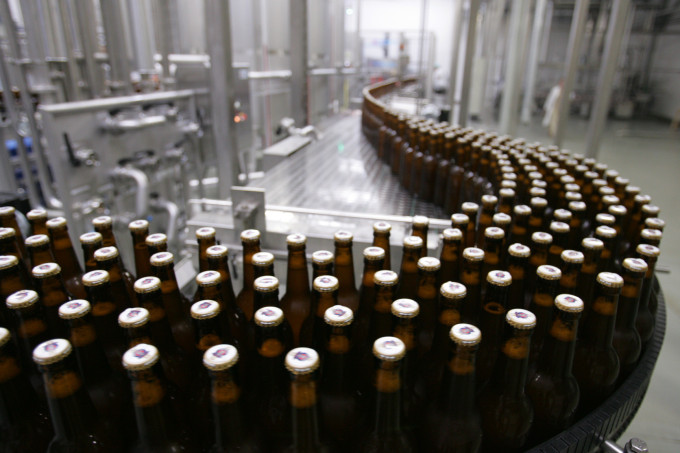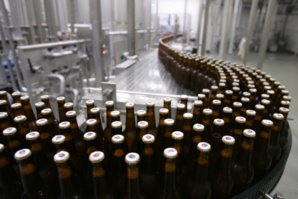In OECD countries (Organization for Economic Co-operation and Development), the consumption of alcohol is approximately two times higher than the world average.
It is interesting in this case, that people with higher levels of education and high socioeconomic status tend to drink more alcohol, and people with lower levels of education are more susceptible to the dangers of it.
OECD report "Tackling Harmful Alcohol Use: Economics and Public Health Policy" offers a detailed analysis of trends in alcohol consumption, as well as an assessment of public health and the results of its programs to reduce harm in three OECD countries (Canada, the Czech Republic and Germany).
The experience of these countries can be used to develop further policy decisions to combat alcoholism at the international level.
During the period of time, that research in OECD countries covers, there was a decline in alcohol consumption per capita as a whole, while in some countries an increase in consumption was noticed, and in others – the consumption reduce.
These trends are cause for concern, as they are usually associated with an increase in alcohol consumption among young people and the growth of road traffic accidents. In addition, the high level of alcohol consumption is associated with the development of various diseases, as well as the damage that alcohol causes to career.
Key facts that have been discovered as a result of the study:
- The average annual consumption in the OECD countries - 9.1 liters of pure alcohol per capita (average decrease of 2.5% over the past 20 years);
- About 11% of alcohol consumption in the OECD countries are still not fixed. Adding the recorded consumption per capita to that, we get 10.3 liters per capita, which is significantly higher than the average in the world - 6.2 liters;
- The level of harmful use of alcohol (weekly alcohol intake of 140 grams or more of pure alcohol for women and 210 grams or more for men) and the level of episodic heavy drinking (5 to 8 alcoholic drink portions at a time, depending on the country) has grown among young people in many OECD countries;
- The number of children under 15 years old, never drink, decreased from 44% to 30% among men and from 50% to 31% among girls; the number of children who have experienced intoxication increased from 30% to 43% among men and from 26% to 41% among girls;
- In general, representatives of national minorities drink less than the representatives of the majority, but in different countries there are exceptions to this general trend;
- In general, the effect of alcohol on a career is negative, but the study notes that moderate alcohol consumption can have a positive influence on career, particularly at the level of salary.
It is estimated that loss of productivity associated with the harmful use of alcohol, total of 1% of GDP in most countries.
- Alcohol has an impact on the development of various diseases and injuries. Alcohol ranks fifth among causes of death and disability in the world, compared with 1990, when the alcohol was in 8th place.
- Measures to combat alcoholism should be primarily aimed at people suffering from severe alcoholism. Nevertheless, there is not so many steps that may be effective.
Attending physicians, therapists can play an important role in the fight against alcoholism. In addition, measures aimed at reducing the level of driving while intoxicated, should reduce the number of accidents.
- Open dialogue and cooperation with companies producing alcoholic drinks as well as with major retailers in some countries have become part of the policy to combat alcoholism and its consequences.
- However, in most cases, a more large-scale program to combat alcoholism is required. Rising the price of alcohol can lead to better health.
Rising the price of alcohol in the low-price segment can be very effective in the fight against alcoholism. Restrictions on advertising of alcoholic beverages may also bring additional positive results.
- Studies on the use of alcohol can be a good tool in shaping policy to combat alcoholism. Countries and their statistical agencies should make greater efforts to ensure the regularity and accuracy of such studies.
- The combination of different strategies aimed at combating alcoholism, would save budget funds for health care.
In general, the study notes that the combination of various measures aimed at combating alcoholism, can reduce the level of alcohol dependence in different countries by 5-10%.
It is the combination of different policy directions and implementation of the various approaches to the problem are key factors for success in the fight against alcoholism.
It is interesting in this case, that people with higher levels of education and high socioeconomic status tend to drink more alcohol, and people with lower levels of education are more susceptible to the dangers of it.
OECD report "Tackling Harmful Alcohol Use: Economics and Public Health Policy" offers a detailed analysis of trends in alcohol consumption, as well as an assessment of public health and the results of its programs to reduce harm in three OECD countries (Canada, the Czech Republic and Germany).
The experience of these countries can be used to develop further policy decisions to combat alcoholism at the international level.
During the period of time, that research in OECD countries covers, there was a decline in alcohol consumption per capita as a whole, while in some countries an increase in consumption was noticed, and in others – the consumption reduce.
These trends are cause for concern, as they are usually associated with an increase in alcohol consumption among young people and the growth of road traffic accidents. In addition, the high level of alcohol consumption is associated with the development of various diseases, as well as the damage that alcohol causes to career.
Key facts that have been discovered as a result of the study:
- The average annual consumption in the OECD countries - 9.1 liters of pure alcohol per capita (average decrease of 2.5% over the past 20 years);
- About 11% of alcohol consumption in the OECD countries are still not fixed. Adding the recorded consumption per capita to that, we get 10.3 liters per capita, which is significantly higher than the average in the world - 6.2 liters;
- The level of harmful use of alcohol (weekly alcohol intake of 140 grams or more of pure alcohol for women and 210 grams or more for men) and the level of episodic heavy drinking (5 to 8 alcoholic drink portions at a time, depending on the country) has grown among young people in many OECD countries;
- The number of children under 15 years old, never drink, decreased from 44% to 30% among men and from 50% to 31% among girls; the number of children who have experienced intoxication increased from 30% to 43% among men and from 26% to 41% among girls;
- In general, representatives of national minorities drink less than the representatives of the majority, but in different countries there are exceptions to this general trend;
- In general, the effect of alcohol on a career is negative, but the study notes that moderate alcohol consumption can have a positive influence on career, particularly at the level of salary.
It is estimated that loss of productivity associated with the harmful use of alcohol, total of 1% of GDP in most countries.
- Alcohol has an impact on the development of various diseases and injuries. Alcohol ranks fifth among causes of death and disability in the world, compared with 1990, when the alcohol was in 8th place.
- Measures to combat alcoholism should be primarily aimed at people suffering from severe alcoholism. Nevertheless, there is not so many steps that may be effective.
Attending physicians, therapists can play an important role in the fight against alcoholism. In addition, measures aimed at reducing the level of driving while intoxicated, should reduce the number of accidents.
- Open dialogue and cooperation with companies producing alcoholic drinks as well as with major retailers in some countries have become part of the policy to combat alcoholism and its consequences.
- However, in most cases, a more large-scale program to combat alcoholism is required. Rising the price of alcohol can lead to better health.
Rising the price of alcohol in the low-price segment can be very effective in the fight against alcoholism. Restrictions on advertising of alcoholic beverages may also bring additional positive results.
- Studies on the use of alcohol can be a good tool in shaping policy to combat alcoholism. Countries and their statistical agencies should make greater efforts to ensure the regularity and accuracy of such studies.
- The combination of different strategies aimed at combating alcoholism, would save budget funds for health care.
In general, the study notes that the combination of various measures aimed at combating alcoholism, can reduce the level of alcohol dependence in different countries by 5-10%.
It is the combination of different policy directions and implementation of the various approaches to the problem are key factors for success in the fight against alcoholism.






